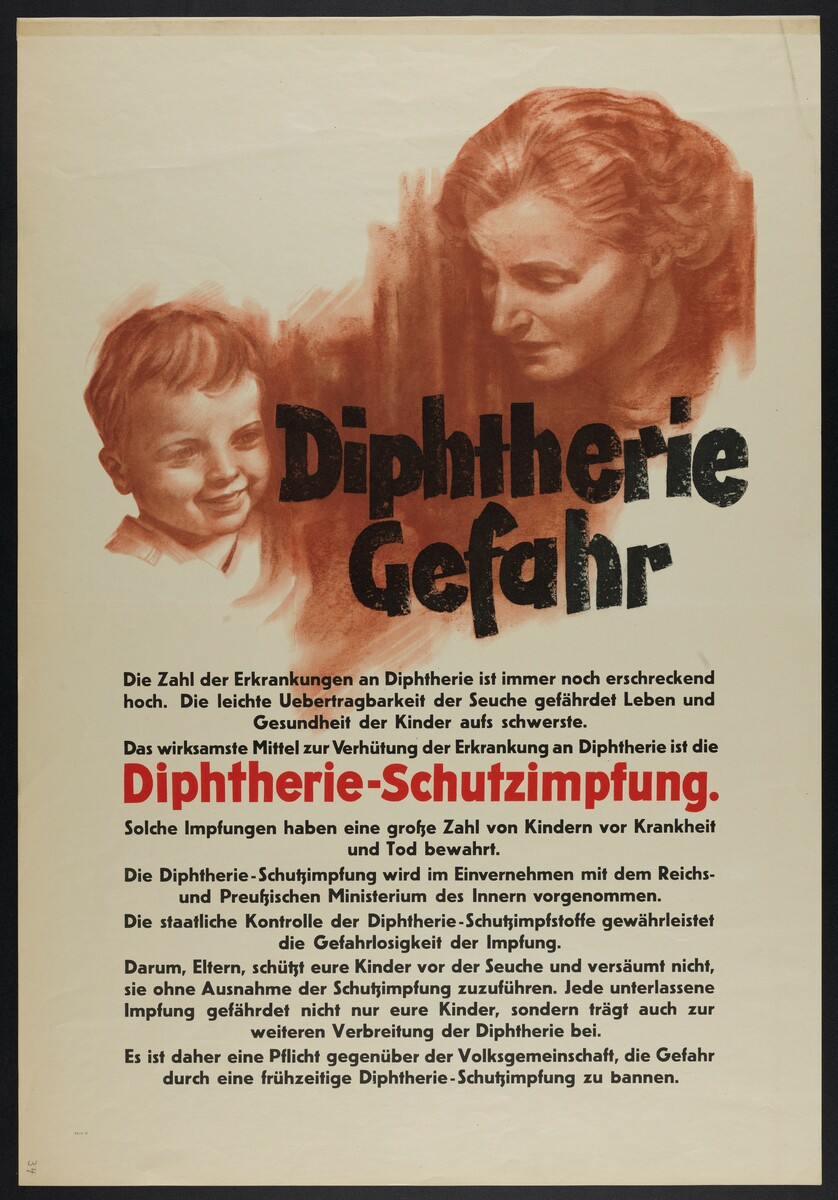Source

Source: Poster, c. 1934. Unknown artist. Wellcome Collection, https://wellcomecollection.org/works/tfbcwk5e
Nazi health policy aimed to ensure the health of the national body, in other words of the Nation’s racial health, first and foremost. The prioritization of racial health (and the productivity of workers) in Nazi Germany also meant a greater coordinated effort to stop the spread of infectious diseases. While resources were marshaled to support proactive measures to limit epidemics such as immunization against diphtheria, it would appear that the regime was fighting an uphill battle against several diseases, given the stresses of war preparation, inadequate housing and declining nutrition. In 1933, 77,000 diphtheria cases had been counted, and four years later the total topped 146,000. This poster reminded parents that it was their duty to the Volksgemeinschaft to have their children immunized to help prevent the further spread of the disease. In 1934, the first major vaccination campaign against diphtheria was launched, advertised with posters like this one, with promotional films by the pharmaceutical companies, in the press, and with leaflets and letters to parents from schools. However, there was no compulsory vaccination against diphtheria as there was, for example, against smallpox. Instead, the regime relied on social pressure, fear of the disease, and mobilization of a sense of duty among members of the Volksgemeinschaft – a strategy that proved quite successful. With the beginning of the war, vaccination against infectious diseases became even more important, since the cramped air-raid shelters and evacuations from the cities led to the fear of a further spread while even fewer medical staff and hospital beds were available than before.

Source: Poster, c. 1934. Unknown artist. Wellcome Collection, https://wellcomecollection.org/works/tfbcwk5e
© Wellcome Trust